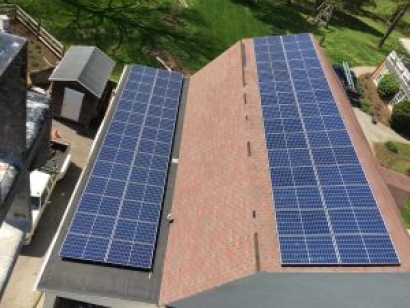
The construction industry has taken this fact seriously in recent years. Construction of residential and commercial buildings is greener and gentler on the environment than ever before, in both the short- and long-term.
Below are just some of the ways the modern construction industry is already doing its part to save the environment while saving money at the same time.
Building More Efficient Homes
Nearly 40 percent of energy utilized worldwide is used in building construction and maintenance. In the US, the housing industry has traditionally relied on fossil fuels, with only China contributing more greenhouse emissions.
Energy-efficient buildings can help reduce the role the US plays in climate change. Builders are already improving construction’s footprint in incremental ways, like:
Builders are also using energy modeling software to design more energy-efficient homes and to assist with sales. Using these apps, sellers can demonstrate to potential buyers how the design improvements not only help save energy but how these upgrades lower their costs.
Reusing Materials and Using More Efficient Building Processes
Buildings as Material Banks project (BAMB), a project funded by the European Union (EU), discovered a "circular" building model that encouraged renovation over new construction. Adding recycling and upcycling of building materials whenever possible could reduce significant waste in the construction process.
The BAMB project also suggested that builders should issue "data passports" tied to the materials they utilize in their construction process. The passports would help track components and allow builders to better understand the environmental impact of using those materials.
Focusing on Multi-Family Dwellings
One way builders can use fewer building materials in designing and constructing homes is to focus on building more multi-family homes, since multi-family dwellings are more energy-efficient than single family homes.
Developers report that the ever-lowering costs of geothermal and photovoltaic installations and the increased availability of energy-efficient products make it more practical and cost-effective than ever to build multi-family dwellings.
Examples of these products include variable-flow refrigerant systems and high-capacity energy recovery ventilation (ERV) units.
All-Electric Buildings
Electricity is becoming increasingly cleaner as a power source, as wind and solar plants replace coal plants throughout the US. Electrifying end-uses like hot water and heating and cooling rather than burning up fossil fuels like fuel oil or gas can significantly reduce building emissions.
A California study described in the C2ES report found that greater use of electric heat pumps among the populace was the single most influential change the state could make to reduce carbon emissions.
Extending the lessons of that study to the broader building market, it becomes apparent that the more a building utilizes efficient, decarbonized electricity rather than fossil fuels, the lower the impact that building will have on climate change.
A report published by RMI disputes an earlier study that suggested electrified homes have a greater environmental impact than gas-powered homes. Ultimately, the report finds, electrifying buildings increases comfort while, at the same time, lowering construction and maintenance costs.
The U.S. is currently the world’s second-top producer of electricity, after China.
Energy-Efficient Trends in Building
The US Department of Energy reports that builders have already found ways to reduce greenhouse gas emissions in new construction by 30-40 percent.
The report also found that an increasing number of consumers for both residential and commercial properties are actively seeking energy-efficient buildings or place a higher value on energy efficiency in their purchasing decisions.
What’s more, as the report also reveals an increasing number of states are updating their building codes to enforce greater energy-efficiency in building planning and construction. In these states, even reluctant builders may make the shift to greener building practices.
Summary
Already, the C2ES reports, energy-efficiency improvements in building construction have resulted in 17.3 percent fewer emissions from the residential sector and 11.4 percent fewer emissions from the commercial sector since their peak in 2005.
Green building is having a positive impact in reducing climate while offering builders the chance to increase, rather than sacrifice, their bottom line.
Provided by Commodity.com

